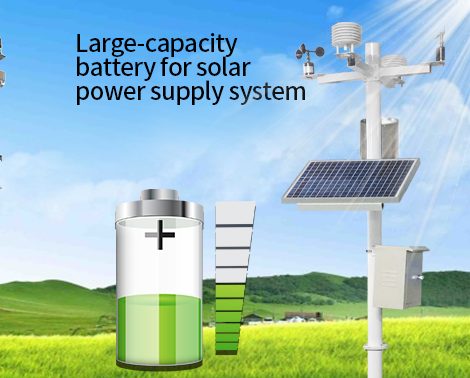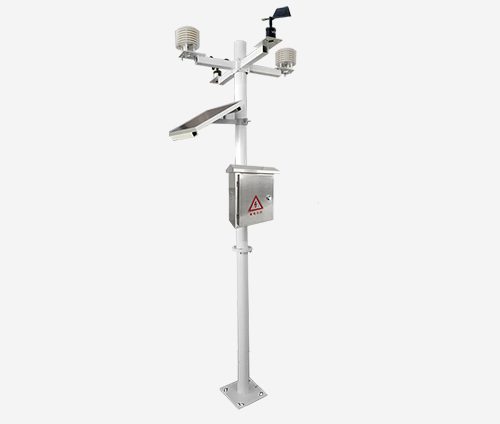Automatic Weather Station (AWS) play a crucial role in environmental monitoring by providing real-time and accurate data on various meteorological parameters. These advanced devices have become indispensable tools for weather forecasting, climate research, and environmental management. In this essay, we will explore the significance of AWS in environmental monitoring, their applications, and the impact they have on understanding and managing our environment.
Understanding Automatic Weather Stations

Automatic weather station are systems that automatically collect meteorological data. They can be paired with iot sensors that measure parameters such as temperature, humidity, wind speed and direction, precipitation, solar radiation, and more. The data collected by AWS is transmitted to a central database, which can analyze and process the data.
Applications of Automatic Weather Stations in Environmental Monitoring
Weather Forecasting:
AWS provides essential data for weather forecasting, enabling meteorologists to predict weather patterns, severe weather events, and climate changes. Accurate and timely weather forecasts are crucial for disaster preparedness, agriculture planning, and aviation safety.

Climate Research:
AWS data is instrumental in climate research, providing long-term records of meteorological parameters that are essential for understanding climate change, its impacts, and developing strategies for adaptation and mitigation.
Air Quality Monitoring:
Some AWS are equipped with sensors to monitor air quality, measuring pollutants such as particulate matter, ozone, nitrogen dioxide, and sulfur dioxide. This data is vital for assessing air pollution levels and their impact on public health and the environment.
Soil and Agriculture Management:
AWS can monitor soil moisture, temperature, and other relevant parameters, providing valuable information for agricultural planning, irrigation management, and soil conservation.
Water Resources Monitoring:
AWS can monitor water bodies, measuring water level, flow rate, and water quality parameters such as pH, dissolved oxygen, and conductivity. This data is crucial for managing water resources, assessing water quality, and monitoring aquatic ecosystems.
Environmental Research:
AWS data is used in various environmental research studies, including studies on microclimates, ecological impacts of weather patterns, and environmental modeling.
Impact of Automatic Weather Stations
The availability of real-time and accurate meteorological data from AWS has revolutionized environmental monitoring and management. Here are some of the significant impacts of AWS on environmental management:
Early Warning Systems:
AWS data is used to develop early warning systems for extreme weather events, such as hurricanes, typhoons, and heavy rainfall. These systems help in disaster preparedness and risk reduction.

Environmental Protection:
AWS data is essential for monitoring and protecting natural ecosystems, including forests, wetlands, and wildlife habitats. It helps in understanding the impact of weather and climate on these ecosystems and developing conservation strategies.
Water Resource Management:
AWS data is crucial for managing water resources, including reservoir management, flood forecasting, and drought monitoring. It helps in optimizing water usage and ensuring the sustainability of water sources.
Urban Planning:
AWS data is utilized in urban planning and infrastructure development to account for weather patterns, climate change, and environmental factors. It helps in designing resilient and sustainable urban environments.
Public Health:
AWS data on air quality and weather conditions is essential for assessing public health risks associated with air pollution, extreme heat, and other environmental factors. It supports the development of public health policies and interventions.
Future Developments in Automatic Weather Station
The field of AWS is continuously evolving, with advancements in sensor technologies, data processing, and communication systems. Future developments in AWS are expected to include:

Enhanced Sensor Technologies:
Continued advancements in sensor technologies will lead to more accurate and reliable measurements of meteorological parameters, including new sensors for emerging environmental concerns.
Integration with Remote Sensing:
AWS will be integrated with remote sensing technologies, such as satellite data and aerial imagery, to provide a more comprehensive understanding of environmental conditions.
Internet of Things (IoT) Integration:
AWS will be integrated into IoT networks, allowing for seamless data transmission, remote monitoring, and real-time decision-making.
Artificial Intelligence and Machine Learning:
AWS data will be analyzed using artificial intelligence and machine learning algorithms to extract valuable insights and patterns from large datasets.
Conclusion
Automatic Weather Station are invaluable tools for environmental monitoring, providing essential data for weather forecasting, climate research, air quality monitoring, water resource management, and environmental research. Their impact on environmental management is significant, contributing to disaster preparedness, environmental protection, urban planning, and public health. As technology continues to advance, AWS will play an increasingly vital role in understanding and managing our environment, contributing to a more sustainable and resilient future.
